Best ARAM Items to Win and Why - League of Legends
The key items to winning your ARAM games, and why they are so effective. This article helps you understand these items in depth, and what they’ll do for you in your ARAM games.
The key items to winning your ARAM games, and why they are so effective. This article helps you understand these items in depth, and what they’ll do for you in your ARAM games.
Itemization in League of Legends is often a struggle for many players, especially in alternative game modes like ARAM. The pool of items is limited, the map design makes the game heavily focus on 5v5 teamfights, and certain items find far more value than others in comparison to Summoner’s Rift. With the right items and some tactical thinking, you can avoid “losing to the shopkeeper” by optimizing your item builds for the best value in the game mode.
There are five very powerful items among many in ARAM that have extraordinary value. The most common traits among them is that they provide unique or powerful advantages between teamfights or between the poking wars of ARAM games. Here are some of the best items you can build.
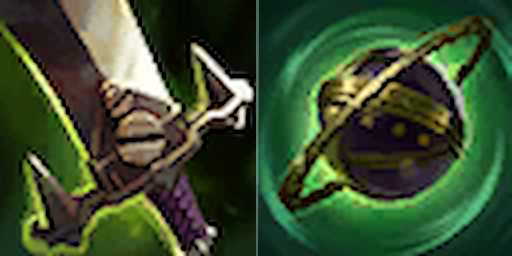
At first, you may be thinking that these two items are merely component items to their full versions of Mortal Reminder, Chempunk Chainsword, and Morellonomicon respectively. But that exactly is what makes them powerful as a rush item that sits in your inventory.
These items share the same effect of applying Grievous Wounds for 3 seconds upon dealing the respective damage typing, reducing healing and health regeneration by 40% for the duration. Their stats are a bit lower on the curve for attack damage and ability power, leaving them not desirable for maximum damage output. However, Grievous Wounds is one of the most powerful debuffs in ARAM.
Consider the following. Champions in ARAM rely on the Health Relics that spawn around the map. In the early and mid-stages of the game, the health relics are often taken during or after a team fight. If they have the Grievous Wounds debuff on them, it is as if you’ve dealt 40% of what they would have healed to their champion. There are many situations where one team can safely poke the other, even while they are under their turret. Grievous Wounds weakens the opponent’s capacity to stay in the lane without dying.
Another factor is that some of the most powerful champions in ARAM have sources of combat healing. Many players remember that time when an Aatrox healed half their health bar instantly, or Swain who feels unbeatable while his Demonic Ascension is actively draining everyone’s health. Many players reactively build Grievous Wounds items after losing a teamfight. The problem is that the lost teamfight likely swung the map control in the favour of the other team and fed gold to their carries. Building a cheap item like Executioner’s Calling or Oblivion Orb early can give your team the edge against champions that rapidly heal during combat.
The third reason is actually a less than practical one: A morale booster. When all of your teammates see “X has purchased an Oblivion Orb” in their chat early into the match, they feel much more confident when fighting powerful healing champions. It gives your teammates the opportunity to build their own items while one champion can maintain the important goal of weakening the opponent’s healing. The more selfless teammates are equally as praised as the ones doing consistent damage.
Consider also what the opponent may be thinking when you rush an antihealing item. Many players do not enjoy being on the end of debuffs, especially if their champion identity revolves around that mechanic. In the same vein as rushing Serpent’s Fang or Anathema’s Chains, the item often singles out one or two champions that are heavily affected by the item’s effects. It simply becomes unfun for the other player, which may or may not make them play worse, complain about it in all chat, or want to forfeit the game.
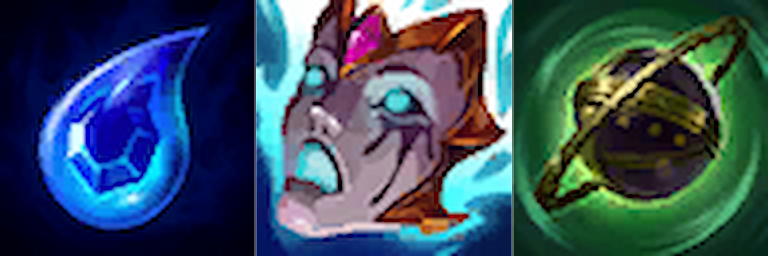
The Liandries’ Torment + Oblivion Orb combo
One of the best reasons for these items is that they are consistently powerful on damage over time champions, which are often powerhouses in ARAM. Champions like Brand, Malzahar, Zyra, and Aurelion Sol all often take items like Liandry's Torment, which applies as magic damage for Oblivion Orb. The debuff persists for three seconds after the damage ticks, which players often get impatient to wait off before running to a health relic.

The distant tankier cousin of Executioner’s Calling and Oblivion Orb, Bramble Vest has seen far better days. At one point, it used to be the ultimate lane-winning item against champions like Fiora and Urgot, at the time when the item was more aggressively tuned. These days, especially in ARAM, it is a lot more situational of an item.
Bramble Vest requires the opponent to hit your champion with a basic attack before it applies the effect. In theory, against champions like Fiora, whose damage counts as primarily basic attacks, it is an effective purchase. But against other champions, it becomes inconsistent as your opponent can choose to use their burst of healing before considering basic attacks, making the effect relatively useless. The item lacks the agency given by its damage-applying counterparts, and only provides armor which is useless against champions like Swain.
Bramble Vest is not entirely out of the equation for value, but the inconsistency of how it is applied weakens its value. It also does not help that tank champions really want to itemize specifically against carries, which having armor as a main stat may not always be useful.
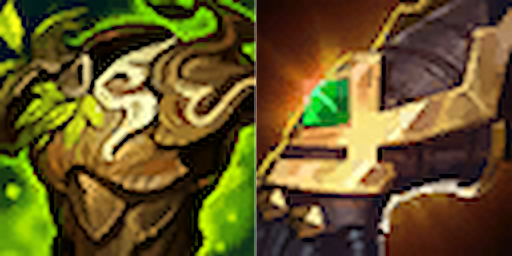
In a game mode without the ability to return to base for healing, Warmog’s alleviates this problem with one of the most powerful passives in ARAM. If you have over 1300 bonus health and are out of combat for 8 seconds, you regenerate roughly 5% of your maximum health every second.
The main benefit is that you can take poor trades with the opponent, and not be as punished for it as normal. It is particularly strong as a tool for soaking damage for your carries, letting you go back and forth between the fighting and poking. For tanks, this is invaluable as most of the time, your relevancy as a tank is how long you can stay in the fight. If the other team’s frontline lacks sustain, you can back off, restore your health, and be much more prepared for the next teamfight than your opponent.
It also benefits certain squishier champions that do not mind the loss in damage items or already build health. Champions like Veigar who like Rod of Ages and infinitely scale can easily slot Warmog’s as a defensive item. Mage champions who excel in waveclear and have bonus health items find a lot of value in shrugging off poke from the opponent.
In particular, it has notable interaction with Soraka, who turns into an infinite healing battery for her teammates so long as she can keep up the mana costs. In ARAM, it guarantees your team will win any poking war because Soraka can keep her teammates topped off in health. For Soraka who is also very squishy, bonus health is not completely unwelcome, although it does have an awkward interaction where it raises the cost of her healing ability.
Champion health before teamfights is a major advantage in any scenario, especially in ARAM where the sources of healing are limited. If your opponent’s see that their poking is ineffective, it forces them into a scenario where they absolutely need to start a teamfight. If it happens that your champions are better team fighters, then the advantage naturally swings to your team.
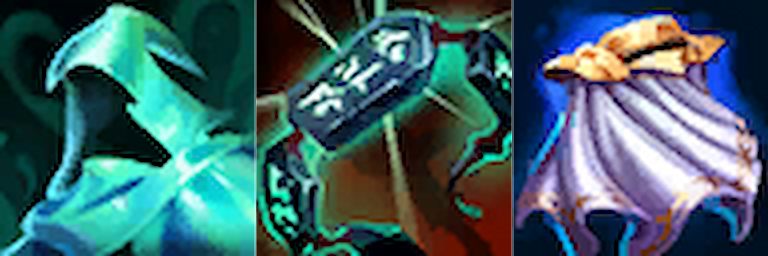
Kaenic sits in a spot where it is an incredibly powerful item, but also potentially worthless. It has a similar effect to Warmog’s, where out of combat it grants a magic shield. At first, it seems worse because it takes 15 seconds, and only grants protection from magic damage.
However, many popular champions in ARAM are mages, which Kaenic Rookern performs excellently against. Compared to Warmog’s Armor, the stats grant a whopping 80 magic resist and a reasonable 400 health. Early resistance items have far more value than pure health as a first or second item because the opponent’s champions are unlikely to have completed their magic penetration items. The added magic shield mitigates a lot of the short trades that you take with your opponent, letting you maintain health in the early and mid-stages of the fight. The magic shield is effectively having that much health against the opponent’s mages.
It also helps that the build path for Kaenic Rookern is very effective in ARAM. It allows you to start Spectre’s Cowl, giving you a modest amount of resistance and health, but also health regeneration. Health regen especially early quickly adds up with low damage trades. After your first death, the second item is often the Negatron Cloak, which is a very large spike defensively in the early stages of ARAM.
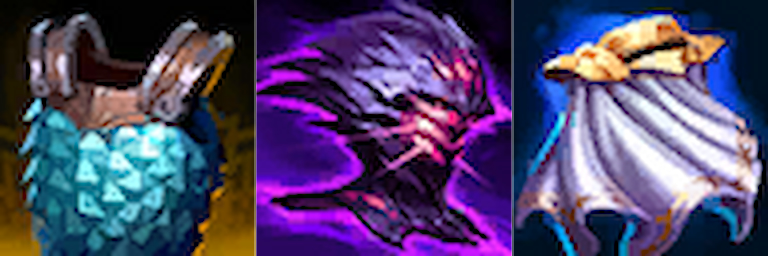
Jak’Sho needs no introduction, being the most versatile defensive item that many players love to rush ever since the days it was a Mythic item. A respectable 50/50 split in armor and magic resist, 300 health, and an effect that amplifies your bonus stats by 30% after 5 seconds in combat. Versatile items let you itemize and have time to think on who you will try to itemize against. If either their mages or their attack damage carries do well, you will have the stats for both of them.
Another key factor is that Jak’Sho eases your path to building Warmog’s Armor as a potential second item. Having a good amount of mixed stats means that your effective defence is much greater with more health than it is simply rushing pure health items. The biggest weakness of Warmog’s Armor is its pure health and no resistances, which means Jak’Sho into Warmog’s is more efficient than the other way around. With the Overgrowth Rune, it also makes it easy to unlock the Warmog’s Armor passive by the second item. Both items together grant 300 + 750 health. With both your runes set to scaling and Overgrowth, hitting 250 extra health is very easy by your second item.
Outside of these five items, there are a lot more items that are especially suited to teamfights, like Frozen Heart, Shurelya’s Battlesong, and Anathema’s Chains. However, the above five items find themselves useful much more often, and more consistently. It is always important to pick your item builds based on the situation at hand. In ARAM, this is especially the case as the item builds may differ from that of Summoner’s Rift where champions may consider different item builds.